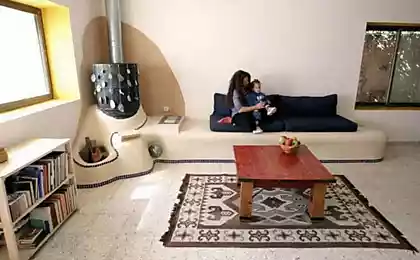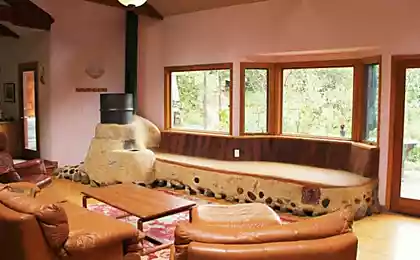453
Cooling of flue gases
Scientists and engineers for many years studied various ways of trapping and storing carbon. Such techniques are quite expensive, but are still considered necessary to reduce carbon dioxide emissions, protecting the environment and conserving it for future generations.
However, new research by Scandinavian research group showed that the system for cooling the flue gas can significantly reduce the costs of capture and storage of carbon, up to 30 percent. Today, this system has great potential for efficient, rapid deployment, being the most promising technology known.
Cooling of the flue gases of the largest industrial enterprises, power plants causes condensation of gaseous carbon dioxide concatenate. After the resulting liquid transporterowych by pipeline, by boat or in tanks for permanent storage. The study showed that this method wastes less energy than traditional measures, which used expensive chemicals and materials to extract the carbon dioxide. Such a factor would reduce the cost of transporting liquid carbon.

The researchers found the most suitable place to store unwanted carbon, which will be in liquid form. This place was the shale layer at the bottom of the North sea. He is known as field Sleipner. The British geological survey claims that since 1996, the specified area was introduced more than 10 million tons of carbon. However, the reservoir can hold a greater amount of carbon. Researchers estimate that to take at least 1 percent of the space, it will take about 50 years to collect carbon dioxide emissions from the twenty largest coal-fired power plants.
The question arises about the possible leakage of carbon dioxide from underwater storage. Once in the water, the carbon starts to dissolve, it leads to increase the acidity level of the water. Given this fact, the British geological group has spent more than six three-dimensional seismological experiments. The most recent was conducted in 2008.
The results showed that in case of collision, while in the layer of the seabed, the carbon will remain stored.
Source: zeleneet.com
However, new research by Scandinavian research group showed that the system for cooling the flue gas can significantly reduce the costs of capture and storage of carbon, up to 30 percent. Today, this system has great potential for efficient, rapid deployment, being the most promising technology known.
Cooling of the flue gases of the largest industrial enterprises, power plants causes condensation of gaseous carbon dioxide concatenate. After the resulting liquid transporterowych by pipeline, by boat or in tanks for permanent storage. The study showed that this method wastes less energy than traditional measures, which used expensive chemicals and materials to extract the carbon dioxide. Such a factor would reduce the cost of transporting liquid carbon.

The researchers found the most suitable place to store unwanted carbon, which will be in liquid form. This place was the shale layer at the bottom of the North sea. He is known as field Sleipner. The British geological survey claims that since 1996, the specified area was introduced more than 10 million tons of carbon. However, the reservoir can hold a greater amount of carbon. Researchers estimate that to take at least 1 percent of the space, it will take about 50 years to collect carbon dioxide emissions from the twenty largest coal-fired power plants.
The question arises about the possible leakage of carbon dioxide from underwater storage. Once in the water, the carbon starts to dissolve, it leads to increase the acidity level of the water. Given this fact, the British geological group has spent more than six three-dimensional seismological experiments. The most recent was conducted in 2008.
The results showed that in case of collision, while in the layer of the seabed, the carbon will remain stored.
Source: zeleneet.com























